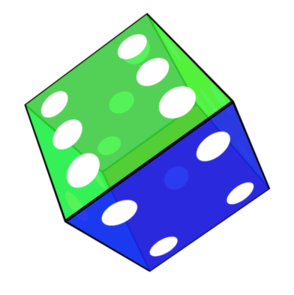Ecosyste.ms: Awesome
An open API service indexing awesome lists of open source software.
https://github.com/rawify/trackball.js
A library to add a virtual Trackball to your DOM
https://github.com/rawify/trackball.js
3d animation arcball css html5 javascript quaternion rotation trackball
Last synced: 15 days ago
JSON representation
A library to add a virtual Trackball to your DOM
- Host: GitHub
- URL: https://github.com/rawify/trackball.js
- Owner: rawify
- License: mit
- Created: 2021-07-12T10:12:32.000Z (over 3 years ago)
- Default Branch: main
- Last Pushed: 2024-12-01T13:31:46.000Z (about 1 month ago)
- Last Synced: 2024-12-10T13:08:57.203Z (24 days ago)
- Topics: 3d, animation, arcball, css, html5, javascript, quaternion, rotation, trackball
- Language: JavaScript
- Homepage: https://raw.org/code/trackball-rotation-using-quaternions/
- Size: 95.7 KB
- Stars: 41
- Watchers: 2
- Forks: 3
- Open Issues: 0
-
Metadata Files:
- Readme: README.md
- License: LICENSE
Awesome Lists containing this project
README
# Trackball.js - 3D Trackballs for your Website
[](https://npmjs.org/package/trackball "View this project on npm")
[](http://opensource.org/licenses/MIT)
Trackball.js is a small JavaScript library on top of [Quaternion.js](https://github.com/rawify/Quaternion.js) to enable free 3D rotation of elements using CSS3 transforms that feels naturally by using the mouse or touch.

The library does no styling or anything to the DOM, it handles the user action and calculates the transformation you should apply. But this way you have much more freedom on perspective, what elements should rotate and what additional transforms should be applied to the element.
If you are interested in the math behind this library or want to see a demo, take a look at the [derivation of the trackball](https://raw.org/article/trackball-rotation-using-quaternions/).
## Usage
The usage is pretty straightforward. Create a scene that should handle the input and put a object with 3D transforms in it:
```html
...
```
The scene and the object get styling to prepare it for 3D rotation:
```html
#scene {
width: 400px;
height: 400px;
touch-action: none;
perspective: 500px;
position: relative;
}
#object {
width: 200px;
height: 200px;
margin: 100px;
transform-style: preserve-3d;
box-sizing: border-box;
}
.side {
width: 200px;
height: 200px;
position: absolute;
pointer-events: none;
box-sizing: border-box;
}
```
And for each side translate it in 3D to form the object you want using CSS3 transforms, like for example:
```css
transform: rotateY(90deg) translateZ(100px);
```
Now to apply Trackball.js, simply run
```js
let obj = document.getElementById("object");
let tr = new Trackball({
scene: "#scene", // Selector to apply trackball on
q: new Quaternion, // Initial rotation
smooth: true, // Smoothly roll out after a drag impulse was applied
limitAxis: null, // Pass "x" or "y" if rotation should be limited to one axis
onDraw: function(q) {
obj.style.transform = q.toCSSTransform();
}
});
```
The good thing about the callback approach is, that you have full control over the styling. You can use the passed quaternion and transform it further or even use it in another way than CSS transforms.
## Installation
Installing Trackball.js is as easy as cloning this repo or use one of the following commands:
```
npm i trackball
```
## Functions
void rotate(Quaternion by)
---
If no interaction is present, `rotate()` changes the current orientation by the given quaternion
## Coding Style
As every library I publish, Trackball.js is also built to be as small as possible after compressing it with Google Closure Compiler in advanced mode. Thus the coding style orientates a little on maxing-out the compression rate. Please make sure you keep this style if you plan to extend the library.
## Building the library
After cloning the Git repository run:
```
npm install
npm run build
```
## Run a test
Testing the source against the shipped test suite is as easy as
```
npm run test
```
## Copyright and Licensing
Copyright (c) 2024, [Robert Eisele](https://raw.org/)
Licensed under the MIT license.